When it comes to printing designs on garments, the method you choose can make a world of difference. It’s not just about slapping a logo on a t-shirt; it’s about creating a design that looks great, lasts long, and matches your unique vision.
That’s why it’s essential to understand the two most popular printing methods: DTG vs screen printing.
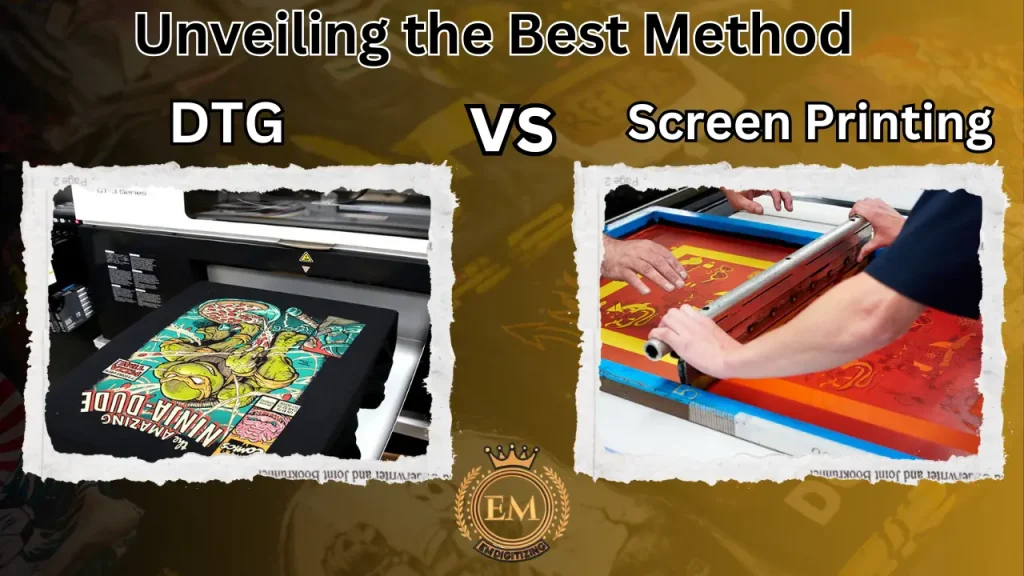
In this article, we’ll dive into the world of these printing techniques, explore their pros and cons, and help you decide which one is the best fit for your needs.
DTG Vs Screen Printing: Unveiling the Best Method
Overview of DTG Printing
Direct to Garment (DTG) printing is a modern textile printing method that directly applies ink to fabrics using inkjet technology.
How DTG Printing Works?
DTG printing is like having a high-tech inkjet printer for your garments. It involves using specialized printers that directly apply ink onto the fabric.
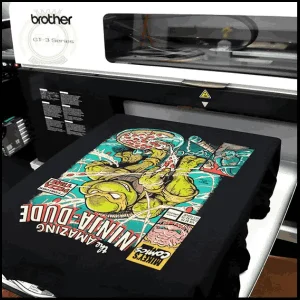
The printer precisely sprays the ink onto the garment, creating vivid and detailed designs. Think of it as your very own wearable masterpiece!
Advantages of DTG Printing
One of the biggest advantages of DTG printing is its ability to produce intricate and colorful designs. Whether you want to print a photo or a multi-colored logo, DTG can handle it with ease.
The printing process is also quick and efficient, making it ideal for small production runs or personalized items.
Plus, the ink used in DTG printing is water-based, resulting in a soft and comfortable feel on the fabric.
Limitations of DTG Printing
While DTG printing is fantastic for complex designs, it may not be the best choice for bulk orders. The process can be time-consuming and expensive for larger quantities.
Additionally, DTG is more suitable for printing on light-colored fabrics, as the ink may not show up as well on darker materials. It’s worth noting that DTG printing works best on 100% cotton garments, so keep that in mind when choosing your canvas.
Overview of Screen Printing
Screen printing is a time-honored technique in the textile industry, known for its versatility and durability in producing vibrant designs on a variety of materials.
How Screen Printing Works?
Screen printing is the OG of garment printing, and it involves using a stencil (or screen) to transfer ink onto the fabric.
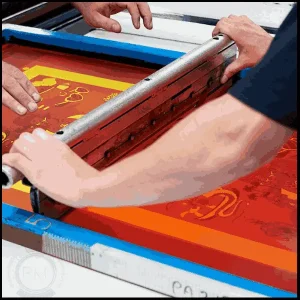
A different screen is used for each color in the design, allowing for precise layering and vibrant results. It’s a tried and true method that has been around for ages, and for good reason!
Advantages of Screen Printing
Screen printing offers exceptional durability, making it a popular choice for clothing brands and promotional wear. The ink used is typically thicker and more resistant to fading, resulting in a longer-lasting print.
It’s also an excellent option for printing on dark-colored garments since the colors can easily pop on the fabric. If you’re planning a large run of shirts, screen printing is often more cost-effective than DTG.
Limitations of Screen Printing
While screen printing can handle large quantities, it’s not as suitable for intricate designs with many colors or fine details. Each color requires a separate screen, which can become time-consuming and expensive for complex artwork.
Additionally, screen printing may result in a slightly thicker print, which might not be as soft to the touch as DTG. But hey, some people like a little texture in their tees!
Factors to Consider: Comparing DTG vs Screen Printing
When comparing costs, quality, and turnaround time, it’s essential to strike a balance between these crucial factors.
Cost Comparison
When it comes to cost, there are a few factors to consider. DTG printing tends to be more affordable for small quantities, while screen printing becomes more cost-effective for larger orders.
The complexity of the design can also impact the price, as screen printing requires separate screens for each color. Ultimately, it’s essential to weigh the upfront costs against your desired quantity and design intricacy.
DTG And Screen Printing Quality Comparison
Both DTG vs screen printing can produce high-quality results, but they have slightly different characteristics. DTG printing excels at reproducing intricate designs and vibrant colors.
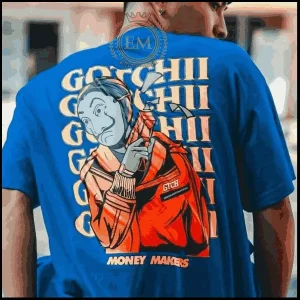
whereas screen printing offers exceptional durability and opacity on dark fabrics. Consider what matters most to you and your brand: eye-catching aesthetics or long-lasting wear?
Turnaround Time Comparison
When it comes to turnaround time, DTG printing takes the crown. It’s a faster process, especially for small orders, as there’s no need for creating screens or extensive setup.
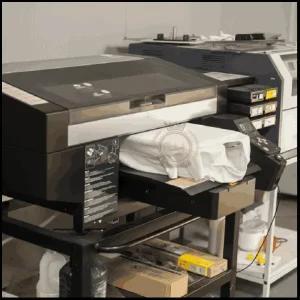
Screen printing, on the other hand, may require more time for artwork preparation and color separation. If speed is crucial for your project, DTG is the way to go.
Durability and Washability: Evaluating the Longevity of DTG vs Screen Printed Garments
When it comes to durability and washability, both DTG vs screen printing have their pros and cons.
Screen printing, the tried-and-true method, uses thick layers of ink that are cured onto the fabric, resulting in a vibrant and long-lasting design.
These prints can withstand multiple washes without significant fading or cracking, making them a popular choice for apparel that needs to withstand regular wear and tear.
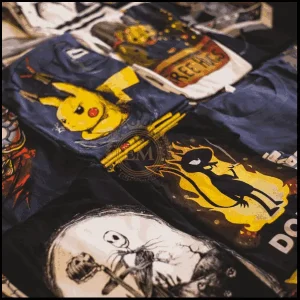
On the other hand, DTG printing involves digitally printing the design directly onto the garment using specialized inkjet technology.
While DTG prints can also withstand washing, they may not be as durable as screen prints, especially if the garment is subjected to frequent and aggressive washing. Over time, the colors in DTG prints may fade slightly or show signs of wear.
Ultimately, the durability and washability of your printed garments will depend on various factors, such as the quality of the ink and fabric, proper care instructions, and how often you plan to wash them.
If longevity is a top priority, screen printing may be the better option for you.
Design Complexity: Assessing the Suitability for Intricate Designs
When it comes to intricate designs, DTG printing takes the crown. Its digital nature allows for precise and detailed prints, making it the go-to choice for complex artwork, photographs, or designs that feature intricate patterns and shading.
Screen printing, on the other hand, relies on a stencil-like process where each color in the design requires a separate screen.
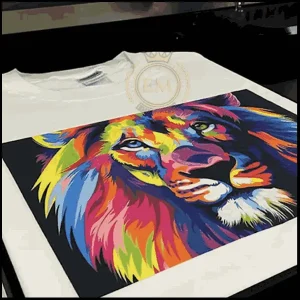
This can make it challenging to achieve fine details, gradients, or small text without compromising the design’s clarity. While screen printing can still produce impressive results, it may not be the best choice for designs that demand intricate precision.
If your design features fine lines, delicate details, or photorealistic images, DTG printing will give you the best results. However, if your design is simpler or uses bold, solid colors, screen printing can still deliver excellent quality.
Environmental Impact: Analyzing the Sustainability of DTG vs Screen Printing
Let’s talk about the elephant in the printing room: the environmental impact. In terms of sustainability, DTG printing has a clear advantage over screen printing.
DTG printing minimizes waste by only using the necessary amount of ink for each specific design. It doesn’t require screens or other physical setups, which means no chemicals or excessive water usage are involved in the printing process.
This makes it a more environmentally friendly option, especially for small-batch or on-demand printing.
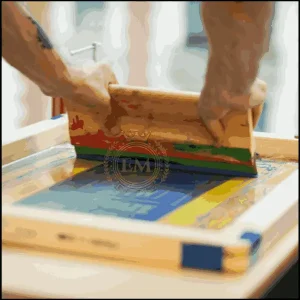
On the other hand, screen printing involves the use of screens, emulsions, and chemicals, which can result in more waste and pollution. Additionally, the cleanup process for screen printing requires significantly more water compared to DTG printing.
While there are eco-friendly practices and products available for screen printing, such as water-based inks and environmentally-conscious cleanup methods, DTG printing generally has a smaller ecological footprint.
Conclusion: Determining the Best Method for Your Printing Needs
In the battle between DTG vs screen printing, there is no definitive winner. Both methods have their strengths and weaknesses, making the decision ultimately depends on your specific printing needs.
If durability and washability are crucial, particularly for garments that will undergo frequent washing or heavy use, screen printing is the way to go. Its thicker ink layers and curing process ensure longevity and vibrant colors that can withstand the test of time.
On the other hand, if you’re looking to print complex designs with fine details, DTG printing will be your best friend. Its digital technology allows for precise and intricate prints that can capture every nuance of your artwork or photographs.
Finally, if sustainability is a top priority for you, DTG printing wins in terms of its minimal waste and eco-friendly practices.
EMdigitizing: Embroidery Digitizing Expert At Your Service
If you are interested in any kind of embroidery project, then EMdigitizing is the best option for you. We offer embroidery digitizing and vector art services with a fast turnaround time. You can also visit and check our website as well as our best services.
We also offer a great 50% discount on all our services for our respected first-time clients. We also offer free quotes generated in just 5 minutes.
You should grab this limited-time offer and take your embroidery project to the next level with EMdigitizing.
If you’ve any queries regarding this topic, you can ask them. Thank you for taking the time to read this article.
Frequently Asked Questions:
Direct to Garment (DTG) printing generally does not last as long as screen printing. While DTG offers high-quality, detailed prints, screen printing is known for its longevity and durability over time.
DTG can be more expensive than screen printing for large orders due to its slower process and higher ink costs, but for small batches and intricate, multi-colored designs, DTG may be more cost-effective.
DTG works best on 100% cotton as the fabric absorbs the ink well, producing vibrant and high-quality prints. However, it can also be used on cotton blends, but the results may vary.
DTG prints can fade over time, especially with frequent washing or improper care, but advancements in ink technology have improved their washability and overall longevity.
